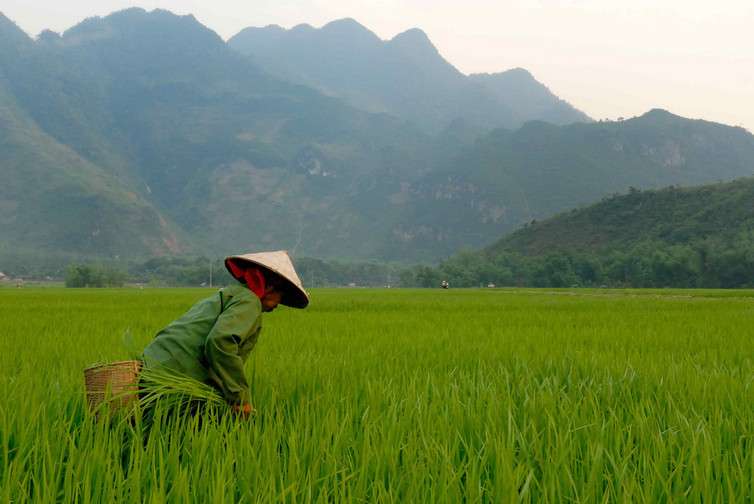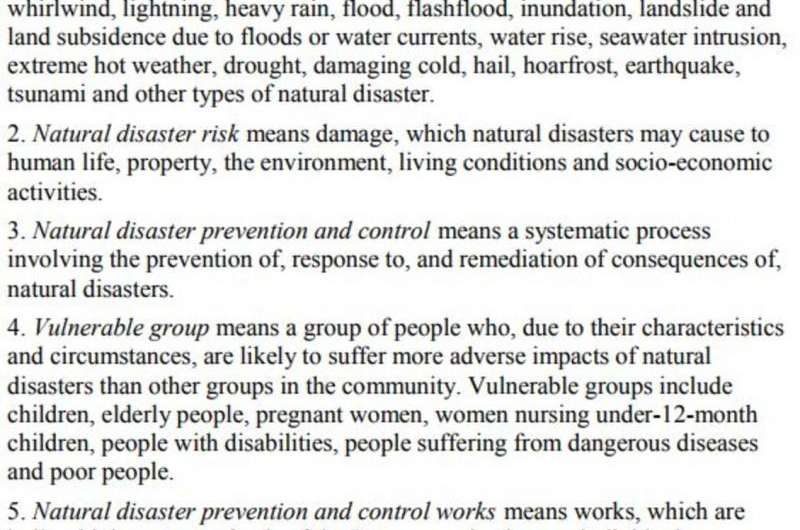In Vietnam, poverty and poor development, not just floods, kill the most marginalised

Flooding and landslides in northwest Vietnam have caused widespread devastation since the start of August. The disaster crippled the provinces of , situated within one of the most disadvantaged regions of the country.
Tragically, , many more are missing and almost 1 trillion Vietnamese Dong (US$43m) of damage . The already poor infrastructure of the region has been badly impacted.
Pictures and videos posted online and across different media channels have shown . In we can see the rapidly moving flood water sweeping through residential areas.
Disasters are widely misunderstood in Vietnam – as they are elsewhere – as "natural" occurrences. As a consequence of this, there is little open discussion about the that are inextricably linked to the issue. It is of particular concern that the voices of those most affected, Vietnam's ethnic minorities, are not heard.
Minority groups most affected
Ethnic minority groups, predominantly the Tay, Thai and Hmong peoples, compose approximately . It is one of the poorest parts of the country. The in the region is 73% and the extreme poverty rate 45.5%. By comparison, the extreme poverty rate among the Kinh majority (88% of population) nationwide is 2.9%.
Ethnic minorities in Vietnam are due to the lack of access to education, infrastructure, transportation, health care and other services. These factors have contributed to wide-ranging social and economic disadvantage - and therefore, increased vulnerability.
In the northwestern part of Vietnam, these groups are also often subsistence farmers – crops are critical to their existence and flooding brings devastation.
Beginning in June, in the region, and there were in early July. These messages were disseminated across media platforms. However, it is unclear whether this message was actually received by those most at risk.
Even more problematic is the way in which disasters are perceived and discussed in Vietnam. The focus is invariably on the "natural" quality of disasters, as referred to by the (No. 33/2013/QH13), which to an extent defines the scope of narrative regarding disasters in Vietnam. This language, repeated by the media, leaves many people blind to the social and political aspects of catastrophes.
The official narrative
When disasters happen, the focus of Vietnamese media is consistently on reporting the death toll, loss and damage figures, and operations by and organisations.
In the wake of this tragedy, the government initiated a major .
Lieutenant Lo Thi Sao Chi, who was organising the military response to the disaster, that the government "participated in the search for missing people, relocated households in dangerous areas, cleared soil and rocks from the flood and helped people resettle their lives."
Pretty much the same story - year after year. Deaths From Vietnam Floods Rise to 23
— Slobodan P Simonovic (@SP_Simonovic)
But the media has failed to actually ask the right question: why were the victims living in such in the first place?
How come have not been addressed? Little progress has been made among these most marginalised groups, despite significant improvements across the country as a whole.
Unfortunately, a serious critique of the like this one is almost completely absent in the media.
Devastating development
What has been conveniently forgotten is the fact that communities affected by flooding are often particularly vulnerable because they have been subjected to due to development agendas.

Over the past 30 years, the government has been developing hydropower capacity in the affected region. Hydropower projects in (completed 2016) and (completed 2012) were designed to maximise profit. Unfortunately, in many cases of such development, are secondary concerns.
The projects have . International Rivers reports that the Son La project alone, in the northwest of the country and 320km from Hanoi, may have displaced 91,000 people.
Those forced to move have been thrust into ever more vulnerable living conditions.
In many cases they have lost access to the river that sustained livelihoods and essential services such as water and electricity. As a result, poverty and inequality have been exacerbated.
Reduce risk, listen to the people
Yet, people in northwest Vietnam continue to demonstrate a remarkable level of resilience in spite of systemic disadvantage. Those who had been displaced by flooding almost immediately began to clean up the area after this latest tragedy, and rebuild their lives.
Although rural Vietnam has historically experienced extreme disaster impacts, to act as a risk multiplier.
The government officially advocates for the decentralisation of disaster risk management, but Dutch NGO CORDAID that, "the involvement of vulnerable groups is still limited and in effect the plans are still managed in a top-down manner."
It is possible to reduce disaster risk through policy decisions and development plans. However, in reality the more common outcome of development is the .
More often than not, vulnerable people are ignored and decisions are made based on the potential for economic gain.
Those on the margins of society always suffer in disasters. If we truly aspire to build a better society, their needs must now be prioritised.
Change cannot come quick enough. Northern Vietnam continues to suffer this summer, most recently as to the already stricken region.
Provided by The Conversation
This article was originally published on . Read the .![]()




















